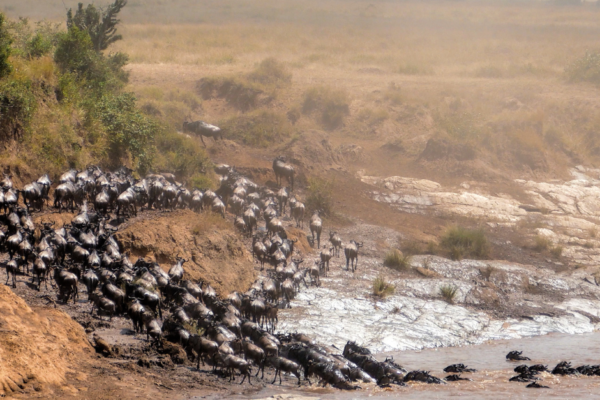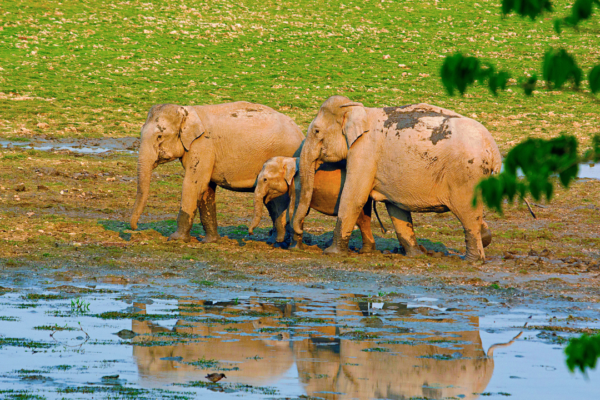The Pantanal is a vast wetland that covers parts of Brazil, Bolivia, and Paraguay. It is one of the most biodiverse and productive ecosystems in the world, hosting thousands of species of plants and animals, including many endangered ones. Among the most charismatic and elusive creatures that inhabit the Pantanal are the ocelots, a medium-sized spotted cat that is also known as the dwarf leopard.
What are ocelots?
Ocelots are mainly nocturnal and solitary animals, except during mating season or when raising cubs. They have excellent vision and hearing, which help them hunt at night. They feed on a variety of prey, such as rodents, birds, reptiles, fish, and crabs. They use their sharp teeth and claws to catch and kill their prey and often drag it to a safe place to eat. They can also climb trees and swim well, which allows them to access different habitats and resources.
Ocelots have a wide range across Central and South America, from Mexico to Argentina. However, they prefer habitats with dense vegetation and water sources, such as tropical forests, savannas, marshes, and mangroves. They are territorial animals that mark their home ranges with urine, faeces, and scent glands. Their home ranges vary in size depending on the availability of food and mates but can range from 3 to 46 square kilometres.
Ocelots breed throughout the year, but peak breeding occurs between October and March in the Pantanal. The gestation period lasts for about 79 to 85 days, after which the female gives birth to one or two cubs in a den hidden by vegetation or rocks. The cubs are born blind and helpless and depend on their mother’s milk for the first two months. They open their eyes after 15 days and start exploring their surroundings after a month. They stay with their mother for up to two years, learning how to hunt and survive on their own

Why are ocelots important for the Pantanal?
Ocelots are not only beautiful and fascinating animals, but also important indicators of the health and diversity of the Pantanal ecosystem. They play a vital role in maintaining the balance of the food chain by controlling the population of rodents and other small animals. They also help in dispersing seeds and nutrients through their faeces and urine.
Ocelots are also important for the conservation of other endangered species in the Pantanal, such as jaguars, tapirs, and macaws. They share their habitat with these animals and provide them with prey, shelter, or companionship. They also act as sentinels or alarm systems for these animals by alerting them of the presence of predators or poachers through their loud calls.

What are the threats to ocelots in the Pantanal?
Ocelots are listed as Least Concern on the IUCN Red List, but they are threatened by habitat destruction, hunting, and traffic accidents. While their range is very large, various populations are decreasing in many parts of their range.
Habitat destruction is one of the main threats to ocelots in the Pantanal. The expansion of agriculture, cattle ranching, mining, and infrastructure development has reduced and fragmented their natural habitat, forcing them to live in smaller and isolated patches. This reduces their access to food, water, and mates, and increases their exposure to human disturbance, conflict, and disease.
Hunting is another threat to ocelots in the Pantanal. Ocelots are hunted for their fur, meat, or body parts, which are used for clothing, food, or traditional medicine. They are also killed by farmers or ranchers who consider them pests or competitors for livestock. Some ocelots are also captured alive for illegal pet trade or entertainment.
Traffic accidents are another threat to ocelots in the Pantanal. Ocelots are often killed or injured by vehicles when they cross roads or highways that cut through their habitat. They are also vulnerable to collisions with boats or trains that travel along rivers or railways that run through the wetland.

What are the conservation efforts for ocelots in the Pantanal?
There are several conservation efforts for ocelots in the Pantanal, aimed at protecting their habitat, reducing their hunting, and increasing their awareness.
One of the conservation efforts is the creation and management of protected areas that cover important habitats for ocelots and other wildlife in the Pantanal. These include national parks, ecological stations, wildlife reserves, and private reserves. Some of the notable protected areas for ocelots in the Pantanal are:
- Taima Ecological Station: This is a federal ecological station that covers 11,000 hectares of wetland and forest habitat in the Brazilian state of Mato Grosso do Sul. It is home to a high diversity of plants and animals, including ocelots, jaguars, tapirs, macaws, and caimans. It also serves as a research and education centre for the conservation of the Pantanal ecosystem.
- Otuquis National Park: This is a national park that covers 1,005,950 hectares of wetland and savanna habitat in the Bolivian department of Santa Cruz. It is part of the Pantanal Biosphere Reserve and hosts a rich variety of plants and animals, including ocelots, jaguars, pumas, tapirs, peccaries, and parrots. It also provides livelihoods and cultural values for the local indigenous communities.
- San Rafael National Park: This is a national park that covers 72,000 hectares of wetland and forest habitat in the Paraguayan department of Itapúa. It is one of the last remnants of the Atlantic Forest in Paraguay and harbours a high diversity of plants and animals, including ocelots, jaguars, pumas, tapirs, monkeys, and toucans. It also protects important water sources and archaeological sites.
Another conservation effort is the reduction of hunting pressure on ocelots and other wildlife in the Pantanal. This involves enforcing laws and regulations that prohibit or regulate hunting activities, such as quotas, seasons, permits, or zones. It also involves educating and engaging local communities and stakeholders on the value and benefits of wildlife conservation, such as ecotourism, ecosystem services, or cultural identity. It also involves providing alternative livelihoods and incentives for hunters to reduce their dependence on wildlife resources.
Another conservation effort is the increase of awareness and appreciation for ocelots and other wildlife in the Pantanal. This involves conducting research and monitoring the ecology and behaviour of ocelots and other wildlife species, using methods such as camera traps, radio collars, or genetic analysis. It also involves disseminating information and knowledge on the importance and status of ocelots and other wildlife species to the public and decision-makers, using media such as publications, documentaries, or social networks. It also involves promoting ecotourism and environmental education opportunities for visitors and locals to experience and learn about ocelots and other wildlife species.

Ocelots are one of the most amazing and adorable animals that you can see in the Pantanal. They are not only a delight to watch, but also a vital part of the wetland ecosystem of the Pantanal. They are also a symbol of the conservation and awareness of the wildlife in the Pantanal. Join us in our expedition of Jaguars of Pantanal- 2024 where you can learn more about these magnificient creatures and their wetland treasures and appreciate their contribution to the rich heritage of South America.





